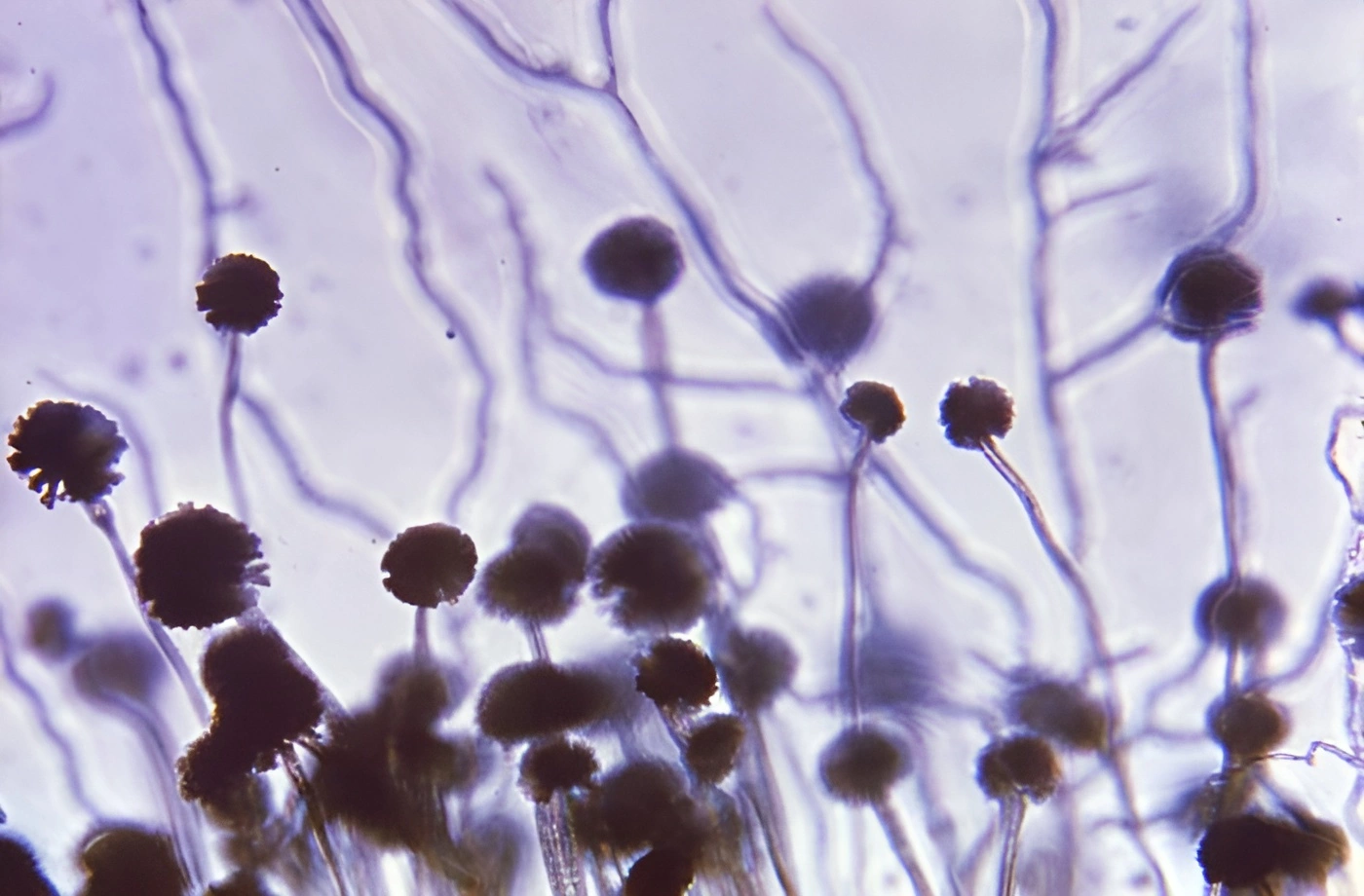
Aspergillus is a genus of fungi. It received its name due to its similar shape to an aspergillum, which is a tool used in religious ceremonies. Along with Penicillium and Cladosporium, it is the most common type of indoor mold and one of the most well-studied. However, it also causes a range of health problems when inhaled.
Examples of Aspergillus Molds
There are over 180 different species in the Aspergillus genus. Below are 3 of the most common.
Aspergillus fumigatus
Aspergillus fumigatus, derived from the Latin word for “smoked,” is the most common cause of dangerous fungal infections in humans.
There are several reasons for this:
- A. fumigatus’ spores are dispersed easily into the air by even the slightest air currents.
- These spores are resistant to ultraviolet radiation — something we’ve warned about previously — due to “the presence of melanin in their cell walls,” which offers them protection against the human immune response.
- Their spores are the perfect size and chemical structure for reaching deep into the lungs and adhering to them.
There are 2 other possible contributors to A. fumigatus’ infectious nature.
- It has developed resistance to azoles (a range of antifungal drugs.)
- It produces mycotoxins that are responsible for causing “repeated infections found among the inhabitants of buildings with moisture problems.”
Aspergillus niger
 Magnified A. niger, 1965 (Image credit: CDC / Dr. Hilliard F. Hardin via the Public Health Image Library)
Magnified A. niger, 1965 (Image credit: CDC / Dr. Hilliard F. Hardin via the Public Health Image Library)
Aspergillus niger, commonly known as black mold, comes from the Latin word for “black.”
This fungus is used to generate large quantities of citric acid, and create enzymes that are used in both food and biofuel production. It also helps protect the environment as it can be used to remove chemical dyes from water. However, these benefits don’t negate the fact that black mold “is the most harmful of all the mold found indoors.”
Aspergillus versicolor
Like black mold, Aspergillus versicolor produces some very interesting compounds, including anticancer metabolites that have contributed to cancer research. It also can be useful for removing lead from industrial wastewater.
On the other hand, A. versicolor is a prolific generator of microbial VOC gases, which may cause “headaches, lack of concentration, inattentiveness, and dizziness.” It also causes a range of skin and eye infections because it produces sterigmatocystin, which may be an immunosuppressant.
What They Have in Common
All 3 of these Aspergillus species share certain traits.
- Aspergillus spores can be allergy and asthma triggers. This means that no matter how useful they are, you don’t want colonies thriving indoors.
- Aspergillus spores are everywhere. You breathe Aspergillus spores every single day. The goal is not elimination — but reduction.
- Many Aspergillus spores can cause illnesses. Aspergillosis refers to a spectrum of diseases caused by Aspergillus ranging from moderate respiratory sensitivity to a severe infection.
How ActivePure Manages Mold
We have successfully tested our technology (advanced photocatalysis) against both black mold and A. versicolor. One device containing an earlier generation of advanced photocatalysis reduced A. versicolor counts on surfaces by 84.1%. More impressively, devices with our current technology neutralize 99.9% of airborne black mold spores within 30 minutes.
Luckily, you don’t have to identify the species of mold in your home or business in order to remove it. Check out our mold information blog for tips on how to reduce mold indoors.


